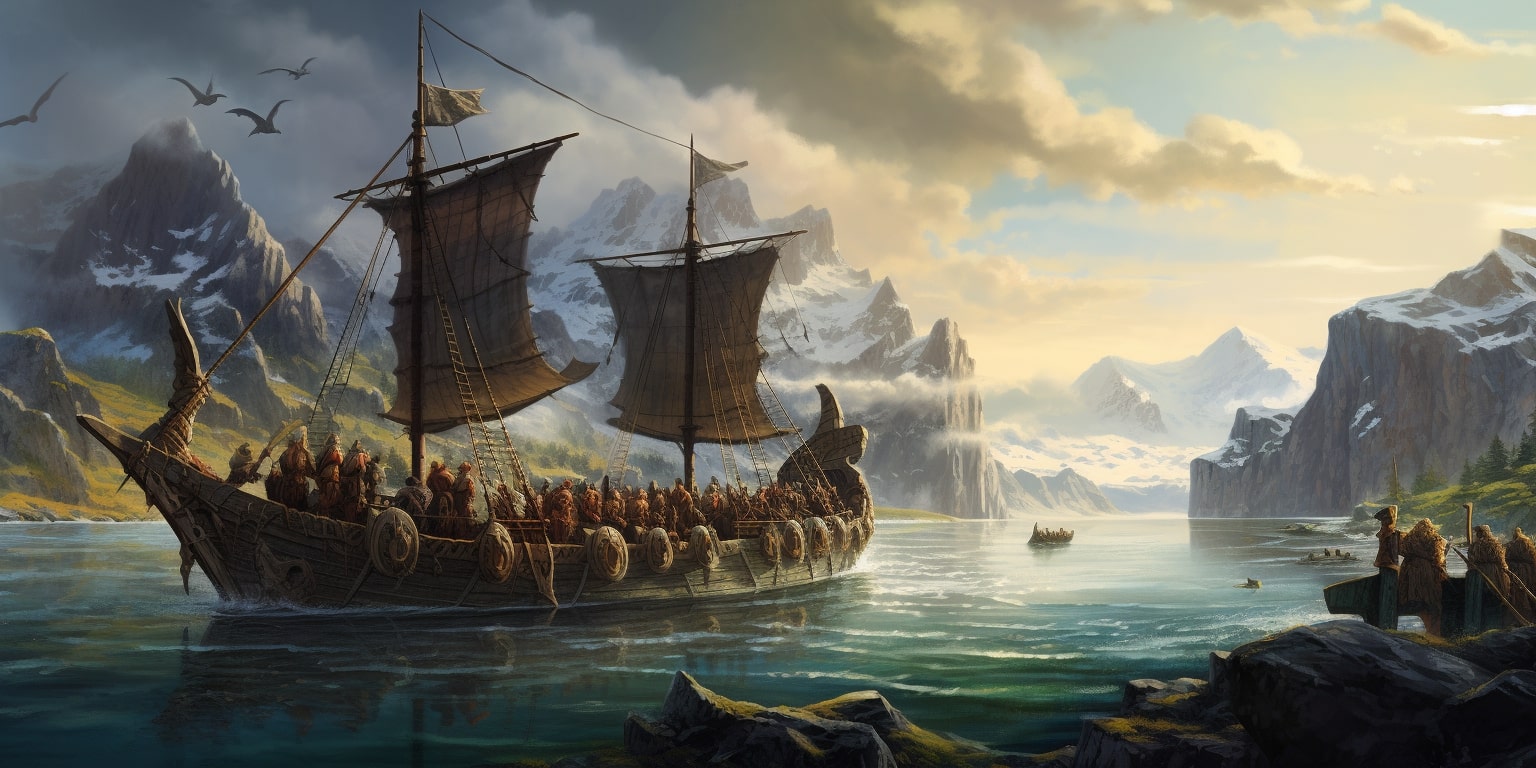From Fury to Fusion: The End of Viking Raids in Britain
For over three centuries, Vikings, the seafaring Norse warriors, instilled fear in the hearts of Britons. Their hit-and-run raids, characterized by swift brutality, left a bloody mark on British history. But what finally brought an end to this era of Viking dominance? This article delves into the complex web of factors that led to the decline of Viking raids in Britain, exploring a confluence of military advancements, political shifts, and cultural assimilation.
The Early Raids: A Time of Fear and Plunder
The Viking Age, roughly spanning the 8th to the 11th centuries, witnessed a surge in Norse maritime exploration and warfare. Driven by a combination of factors like population growth, a thirst for adventure, and the allure of plunder, Vikings targeted coastal settlements across Europe. Britain, with its monasteries brimming with riches and its fragmented political landscape, became a prime target. The initial raids were characterized by shock and awe. Viking longships, sleek and agile, allowed them to navigate treacherous waters undetected. Their lightning-fast attacks on coastal towns and monasteries left a trail of destruction. Relics, precious metals, and slaves were carted back to Scandinavia, fueling the Viking reputation for savagery.
The initial raids were characterized by shock and awe. Viking longships, sleek and agile, allowed them to navigate treacherous waters undetected. Their lightning-fast attacks on coastal towns and monasteries left a trail of destruction. Relics, precious metals, and slaves were carted back to Scandinavia, fueling the Viking reputation for savagery.
The Anglo-Saxon Response: From Disunity to Fortification
The fragmented nature of Anglo-Saxon England in the early Viking Age hampered a unified response. However, over time, a shift towards centralization began. Kings like Alfred the Great of Wessex (r. 871-899) embarked on a program of military reform. This included the construction of fortified towns, known as burhs, strategically placed along the coast. These burhs served as defensive outposts, housing professional soldiers and providing refuge for surrounding populations. Alfred also instituted a system of fyrd, a national militia, where every landowning freeman had the obligation to bear arms. This ensured a readily available force to counter Viking incursions. Additionally, the development of a stronger navy allowed the Anglo-Saxons to challenge Viking dominance at sea. King Athelstan (r. 924-939) is credited with achieving a decisive victory over a combined Viking force at the Battle of Brunanburh (937), further emboldening Anglo-Saxon resistance.
Alfred also instituted a system of fyrd, a national militia, where every landowning freeman had the obligation to bear arms. This ensured a readily available force to counter Viking incursions. Additionally, the development of a stronger navy allowed the Anglo-Saxons to challenge Viking dominance at sea. King Athelstan (r. 924-939) is credited with achieving a decisive victory over a combined Viking force at the Battle of Brunanburh (937), further emboldening Anglo-Saxon resistance. The Rise of Danelaw: A Viking Foothold, But Not Forever
The Rise of Danelaw: A Viking Foothold, But Not Forever
While Alfred's reforms were instrumental, they didn't completely eradicate Viking presence. Certain regions, particularly in the north and east of England, fell under Viking control, forming an area known as Danelaw. Here, a unique blend of Viking and Anglo-Saxon culture emerged, with Norse laws and customs coexisting with Anglo-Saxon traditions.
However, Danelaw proved to be a double-edged sword for the Vikings. While it provided a territorial base, it also entangled them in the political machinations of Anglo-Saxon kingdoms. Intermarriage and cultural exchange fostered a gradual assimilation of Vikings into Anglo-Saxon society. Viking leaders like Cnut the Great (r. 1016-1035) even ascended the English throne, blurring the lines between raider and ruler. The Norman Conquest: A New Threat, a New Era
The Norman Conquest: A New Threat, a New Era
The Viking Age in Britain came to a dramatic end in 1066 with the Norman conquest. William the Conqueror, a descendant of Viking raiders who had settled in Normandy, France, invaded England and defeated the Anglo-Saxon king Harold Godwinson at the Battle of Hastings. While the Normans themselves had Viking ancestry, they represented a more settled and Christianized version of the Norse people. Their arrival marked a shift in power dynamics, pushing Viking influence out of the picture. The Legacy of the Viking Raids: A Lasting Impact
The Legacy of the Viking Raids: A Lasting Impact
The Viking raids undoubtedly left a profound mark on Britain. They disrupted existing political structures, influenced language and place names, and enriched British culture with artistic motifs and storytelling traditions. However, the Vikings' legacy transcends mere destruction. Their presence spurred the development of a more unified Anglo-Saxon kingdom and fostered cultural exchange that continues to resonate today.
Conclusion: A Farewell to Fury
The decline of Viking raids in Britain wasn't due to a single factor. It was a culmination of military advancements, evolving political landscapes, and a process of cultural assimilation. From the initial shock of the raids to the establishment of Danelaw and the eventual Norman conquest, the Viking Age in Britain stands as a complex and fascinating chapter in history. It is a testament to human resilience, cultural adaptation, and the ever-shifting tides of power.































